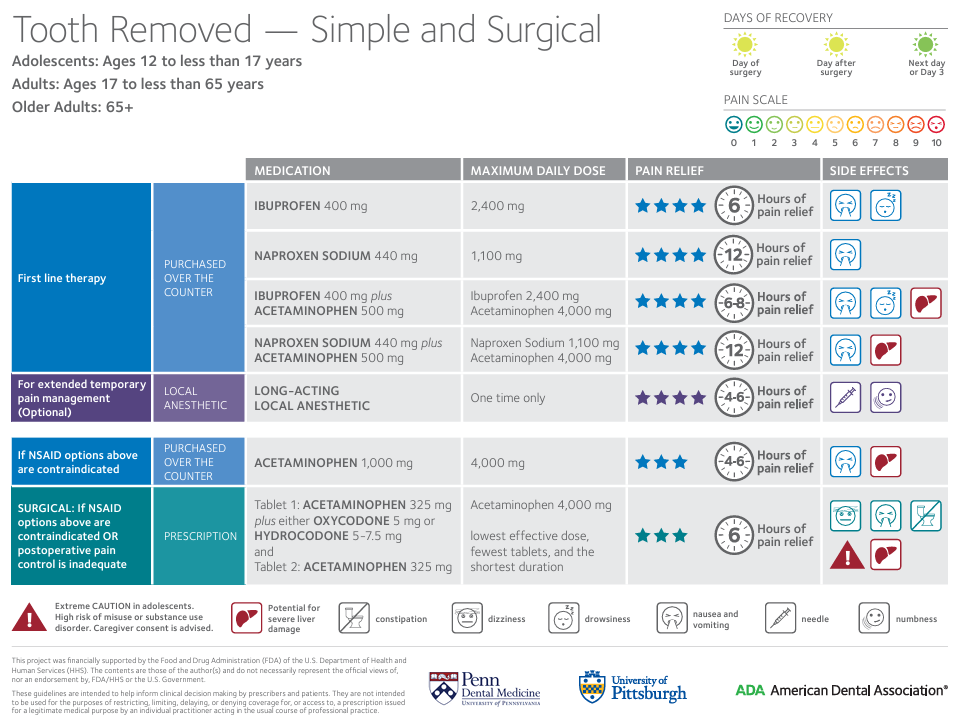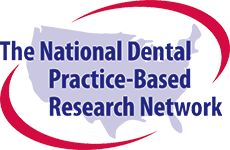Our latest Quick Poll results Participants shows Network dentists are driven by their dedication to improving patient care and keeping up with the latest clinical advancements. However, they face challenges such as time constraints and difficulties with patient recruitment.
Quick Poll Results: Practitioners are largely managing acute pain consistent with the new guidelines

Authors: Dr. Joana Cunha-Cruz & Brittni Ball, MS
We invited you to complete a Quick Poll about the new ADA-endorsed guideline for the pharmacologic management of acute dental pain. The purpose of this Quick Poll was to assess the knowledge and practices of dentists related to acute pain management.
Highlights
- 97.2% were aware that Nonsteroidal Anti-Inflammatory Drugs (NSAIDs) alone or in combination with acetaminophen is the first-line treatment for managing acute dental pain, which is consistent with the new guideline.
- The majority of practitioners were also aware that opioids should be prescribed only after non-opioid analgesics have failed (85%) and for a maximum of three days (84%).
- Approximately a third of the practitioners were not aware there was a new acute pain management guideline.
- The pain management strategies consistent with the new guideline are largely implemented by the dental practitioners who answered this Quick Poll.
Introduction
The United States consumes 80% of the worldwide supply of opioids, but represents only 4% of the world’s population.1 While opioid prescribing by dentists has decreased,2 historically dentists have been one of the top prescribers of opioids in the U.S., second only to family practitioners.3 Many opioids prescribed by dentists exceed a three-day supply, a commonly used metric for duration of anticipated post-procedural pain for most dental procedures and oral surgery.2 While oral health and receipt of oral care are similar in the U.S. and England, U.S. dentists prescribe opioids 37 times more frequently.4
The American Dental Association (ADA) recently endorsed a new Acute Dental Pain Management Guideline.5 The guideline was developed by the University of Pittsburgh School of Dental Medicine, the Center for Integrative Global Oral Health at the University of Pennsylvania School of Dental Medicine and the American Dental Association Science & Research Institute (ADASRI).6 This guideline, which is a result of a three-year award from the FDA, provides comprehensive recommendations for pharmacologically managing acute oral pain in adolescents and adults.
The purpose of this Quick Poll was to assess the practices of dental practitioners related to acute pain management and their knowledge about the new ADA-endorsed pain management guideline.
Methods
Study Design and Participants:
This was a cross-sectional survey providing preliminary data for future studies. Dental practitioner members of the National Dental Practice-Based Research Network in the United States were invited to complete the Quick Poll.
Data collection:
Members of the network were invited to complete an online survey through email. Two email invitations were sent to all members: one in the network’s monthly newsletter sent on May 2, 2024, and one as a follow-up email sent on May 10, 2024. The Quick Poll was open from May 2 through May 18, 2024. The page was opened 1,527 times and the survey was completed times.
Measures and Data Analysis:
The survey asked dental practitioners about their practices in prescribing acute pain medications and their knowledge about the new guideline. Questions included the choice for first-line treatment, their approach to prescribing opioids, and the duration of prescriptions. The data were collected through a web survey in Constant Contact, a digital and email marketing platform. Data were analyzed using descriptive statistics.
Results
Of the 517 respondents, the vast majority of practitioners (97.2%) were aware that nonsteroidal anti-inflammatory drugs (NSAIDs) alone or in combination with acetaminophen is the first-line treatment for managing acute dental pain, which is consistent with the new guideline.
The majority of practitioners were also aware that opioids should be prescribed only after non-opioid analgesics have failed (85%) and for a maximum of three days (84%). While 12% avoided prescribing opioids altogether, 1% of respondents prescribed opioids as first-line treatment, which is inconsistent with the new guideline.
When queried about the influence of the guideline in their practice (questions 4 and 5), 28% of the practitioners reported that they were not aware of the new guideline. Among the remaining practitioners (72%), 32% reported that the guideline influenced their decision to prescribe opioids less frequently, but most practitioners reported they were already prescribing opioids less frequently before the new guideline (67%). When the practitioners who were aware of the guideline were queried about implementing the guideline, most practitioners reported that they had fully implemented it (72%), 13% had partially implemented, and 6% plan to implement in the future. Five practitioners (1%) reported that they will continue to prescribe opioids frequently, and 9% reported that they do not plan to implement the guideline into their practices.
Table 1. ADA pain management guideline Quick Poll responses

Conclusions
The guideline emphasizes the use of nonsteroidal anti-inflammatory drugs (NSAIDs) and, rarely, opioids for the management of acute pain in Dentistry. It recommends NSAIDs alone or in combination with acetaminophen as first-line treatments for managing short-term dental pain in adults and adolescents aged 12 or older. These recommendations were based on data demonstrating NSAIDs alone or in combination with acetaminophen likely provide superior pain relief with an improved safety profile as compared to opioids. Most dental practitioners who participated in this Quick Poll were aware of these practices.
The guideline also provides recommendations for prescribing opioid medications. The limited circumstances where opioids may be appropriate include patients with contraindications to short-term use of NSAIDs and where NSAIDs and acetaminophen when used alone and/or in combination still result in severe dental pain and rescue analgesia is required. While opioids should never be indicated to children,7 the guidelines do not recommend prescribing opioids “just in case” and list best practices statements exerting extreme caution when prescribing opioids to adolescents and young adults.
The ADA-endorsed pain management guideline is well-received and largely implemented by the dental practitioners who are aware of the new treatment guidelines. However, about a third of the practitioners were not aware of the new guideline, indicating a need for further dissemination and education.
Figure 2. Conversation aide for practitioners and patients after a tooth extraction.
Open PDF of this conversation guide
Find the full ADA Pain Management Guideline here
More resources
Additional information about the guidelines are available in the ADA website. We encourage you to share the updated guidelines with your colleagues and on social media.
Interested in Becoming a Member?
References
- International Narcotics Control Board. Narcotic drugs: estimated world requirements for 2024, statistic for 2022. Available at https://www.incb.org/incb/en/narcotic-drugs/Technical_Reports/narcotic_drugs_reports.html. United Nations Publications; 2023.
- Yan CH, Lee TA, Sharp LK, et al. Trends in Opioid Prescribing by General Dentists and Dental Specialists in the U.S., 2012-2019. Am J Prev Med. Jul 2022;63(1):3-12. http://dx.doi.org/10.1016/j.amepre.2022.01.009
- Volkow ND, McLellan TA, Cotto JH, Karithanom M, Weiss SR. Characteristics of opioid prescriptions in 2009. JAMA. Apr 6 2011;305(13):1299-301. http://dx.doi.org/10.1001/jama.2011.401
- Suda KJ, Durkin MJ, Calip GS, et al. Comparison of Opioid Prescribing by Dentists in the United States and England. JAMA Netw Open. May 3 2019;2(5):e194303. http://dx.doi.org/10.1001/jamanetworkopen.2019.4303
- American Dental Association (ADA). New Guideline Details Acute Pain Management Strategies for Adolescent, Adult Dental Patients. Available at https://www.ada.org/about/press-releases/new-guideline-details-acute-pain-management-strategies-for-adolescent-adult-dental-patients. Accessed on August 09, 2024. .
- Carrasco-Labra A, Polk DE, Urquhart O, et al. Evidence-based clinical practice guideline for the pharmacologic management of acute dental pain in adolescents, adults, and older adults: A report from the American Dental Association Science and Research Institute, the University of Pittsburgh, and the University of Pennsylvania. J Am Dent Assoc. Feb 2024;155(2):102-117 e9. http://dx.doi.org/10.1016/j.adaj.2023.10.009



